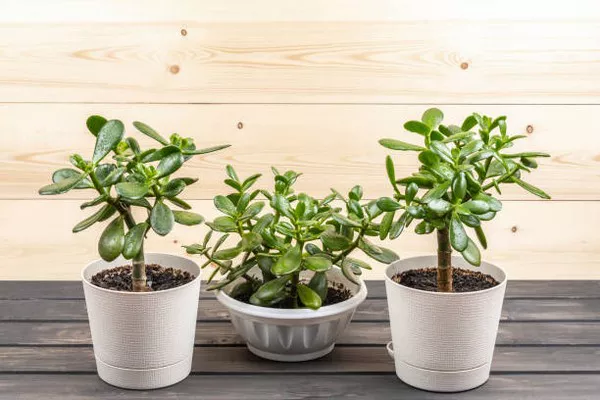Jade succulents, scientifically known as Crassula ovata, are beloved for their lush green leaves, resilience, and ease of care. These beautiful plants are native to South Africa and Mozambique and have gained popularity worldwide as indoor and outdoor ornamentals. Proper care is essential to ensure these succulents thrive and flourish. In this comprehensive guide, we’ll explore everything you need to know to keep your jade succulent healthy and vibrant.
Light Requirements
One of the key factors in successfully caring for jade succulents is providing them with the right amount of light. These plants thrive in bright, indirect sunlight. Place them near a window where they can receive several hours of sunlight each day, but avoid placing them in direct sunlight, especially during the hottest part of the day. Direct sunlight can cause the leaves to burn or scorch, leading to irreversible damage. If you notice your jade succulent becoming leggy or stretching towards the light, it may be an indication that it needs more sun exposure.
Watering Needs
Proper watering is crucial for jade succulents, as they are susceptible to root rot if overwatered. Allow the soil to dry out completely between waterings, and then water thoroughly, ensuring that excess water drains away freely. The frequency of watering will vary depending on factors such as temperature, humidity, and the type of soil used. In general, water jade succulents sparingly, especially during the winter months when they enter a period of dormancy. Always check the soil moisture before watering to avoid overhydration.
Soil and Potting
Choosing the right soil and pot is essential for the health of your jade succulent. Use a well-draining succulent or cactus mix, or create your own by mixing regular potting soil with perlite or coarse sand. This type of soil prevents water from accumulating around the roots, reducing the risk of root rot. When selecting a pot for your jade succulent, opt for one with drainage holes at the bottom to allow excess water to escape. Avoid using pots without drainage, as they can lead to waterlogged soil and root suffocation.
Temperature and Humidity
Jade succulents prefer moderate temperatures ranging from 65°F to 75°F (18°C to 24°C). They can tolerate slightly cooler temperatures during the winter months but should be protected from frost and freezing conditions. These plants are relatively tolerant of low humidity levels, making them suitable for indoor environments with dry air. However, providing some humidity during the winter months can help prevent the leaves from drying out and becoming crispy.
Fertilizing
While jade succulents are not heavy feeders, occasional fertilization can promote healthy growth and vibrant foliage. Use a balanced, water-soluble fertilizer diluted to half strength and apply it during the plant’s active growing season, typically in spring and summer. Avoid fertilizing during the winter months or when the plant is dormant. Over-fertilizing can lead to excessive growth and weak stems, so err on the side of caution and fertilize sparingly.
Pruning and Propagation
Pruning is essential for maintaining the shape and size of your jade succulent and can also encourage bushier growth. Use clean, sharp scissors or pruning shears to remove any dead or damaged leaves, as well as any leggy or elongated stems. You can also prune back the stems to encourage branching and denser foliage. Jade succulents are easy to propagate from stem cuttings. Simply cut a healthy stem and allow it to callus over for a few days before planting it in well-draining soil. Keep the soil lightly moist until roots develop, usually within a few weeks.
Common Problems and Solutions
Despite their resilience, jade succulents can still encounter some common issues. Overwatering is perhaps the most common problem, leading to root rot and eventual plant death. If you suspect overwatering, allow the soil to dry out completely and adjust your watering routine accordingly. Pests such as mealybugs and spider mites can also be problematic. Treat infestations promptly with insecticidal soap or neem oil, and isolate affected plants to prevent the pests from spreading. Etiolation, or stretching, occurs when jade succulents don’t receive enough light. Move the plant to a brighter location to encourage compact growth.
Additional Tips
Repot your jade succulent every 2-3 years to refresh the soil and provide more space for root growth.
During the winter months, reduce watering frequency to prevent the soil from staying damp for prolonged periods.
A healthy jade succulent will have plump, glossy leaves and sturdy stems. Yellowing or mushy leaves may indicate overwatering or root rot.
Consider placing a layer of gravel or pebbles at the bottom of the pot to improve drainage and prevent waterlogging.
Protect outdoor jade succulents from excessive rain and frost by bringing them indoors or providing shelter during inclement weather.
Conclusion
By following these guidelines and providing your jade succulent with the care it needs, you can enjoy its beauty and vitality for years to come. With proper lighting, watering, soil, and maintenance, your jade succulent will thrive and become a cherished addition to your indoor or outdoor space.


